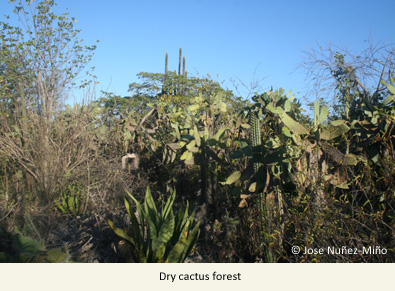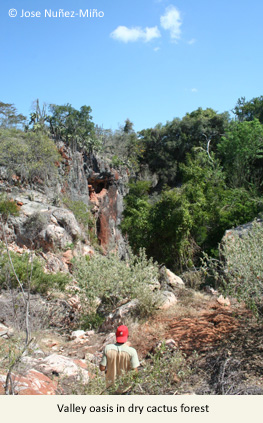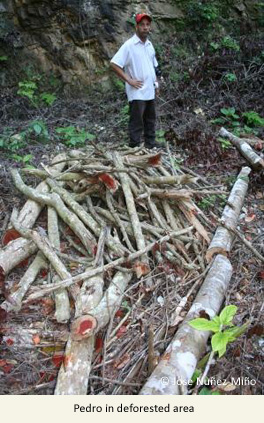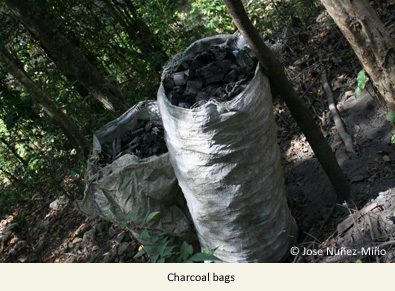I simply can’t write this blog without mentioning the devastating earthquake that hit Hispaniola on the 12 of January 2010; it was felt throughout the island although its destructive impact was concentrated on the Haitian capital (Port-Au-Prince). I was in the capital of the Dominican Republic (Santo Domingo) at the time and we felt it there too; some people in Santo Domingo ran out of and away from buildings in fear.
In terms of the project, this natural disaster is likely to have a real impact in the future. Thousands of people have lost everything and many have been displaced. In the short term, the immediate humanitarian need obviously takes precedence. However, I hope that in the long term the environmental/conservation aspect is taken into account as part of Haiti’s recovery plan.
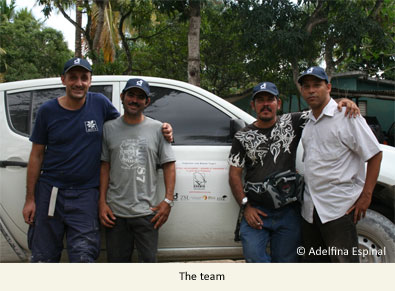
The field work has kicked off in earnest since my last blog and there has been a lot of research activity despite the fact that I spent two weeks back in the UK since then, most of this progress can be credited to our genius research assistants Nicholas and Lleyo. Not only have they surveyed some extensive areas but they have managed to get even more great video footage of solenodon and hutia in the wild. Our library of DNA samples from hutia and solenodon is also growing steadily.
Unfortunately, two lots of samples have come from animals that were found dead, one in the east of the island killed by dogs and one we found in the south west of the island which died of unknown causes but possibly poisoned. Nicolas and Lleyo’s trapping abilities have become increasingly refined so we have managed to collect most of our samples far less destructively with their help. In the future, these samples which are being analysed by a team led by Dr Sam Turvey at the Zoological Society of London (London Zoo) will establish just how genetically separated different populations of the species are.
The other exciting news is that our team is now complete since a local counterpart field project manager has been appointed. I’d like to take this opportunity to welcome and introduce you to Pedro Martinez our newest team member. Pedro is a Dominican Republic national and comes with a wealth of experience after working for several conservation organisations over a number of years. I’m sure his extensive expertise combined with his local knowledge will strengthen our team even further. You will get to know him better over the coming months as he starts to contribute to these blogs.
I’m afraid I dropped Pedro in the deep end as his first expedition into the field as part of the project started on his third day of work when we ventured into Parque Jaragua to do our first extensive survey in the dry cactus forest. It was tough going with extremely spiny cactus surrounding us all the time and razor sharp limestone under foot, Pedro appeared to take it all in his stride. We found evidence of both species even in this harsh landscape but mainly in hollows, dips and valleys where soil was a bit deeper, temperature a bit cooler and the forest was dominated by non-cacti species.
Unfortunately during Pedro’s time in the field we also came across several charcoal ovens along a valley we surveyed near the border with Haiti – it was a sad site to come across magnificent large trees being felled for charcoal. Many of the people doing this are desperately poor and see very few viable alternatives to this activity. The people carrying out this type of deforestation are well aware that it is illegal and live in fear of getting caught, several fled into the forest when we approached a charcoal oven that was in the middle of being built.
Over the following months we are going to be pretty busy. We will continue doing a lot more extensive field work as well as stepping up on the educational and awareness raising front with the help of both the Sociedad Ornitologica de la Hispaniola and the national zoo (Parque Zoologico Nacional de la Republica Dominicana). We are also working with Daniela Rusowsky from Funk Productions to produce a series of infomercial video films. Potentially, a couple of graduate students will also be joining the project and our plan for doing research into the sounds these species make should also be taking shape. Exciting and busy times all round.
I was interviewed by an online magazine in January and you can read the results of this at: Https://news.mongabay.com/2010/0118_hance_nunezmino.html. The project now also has its own dedicated website: www.thelastsurvivors.org which gives a lot more information about both species and everyone involved in the project as well as setting the project into the wider context of what’s happened to the endemic mammals of the Caribbean. If you are keen to find out more then I strongly recommend you log on, although as always we are always happy to answer any questions directly.
For now and until our next update, I bid you farewell.
